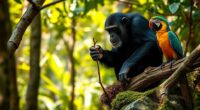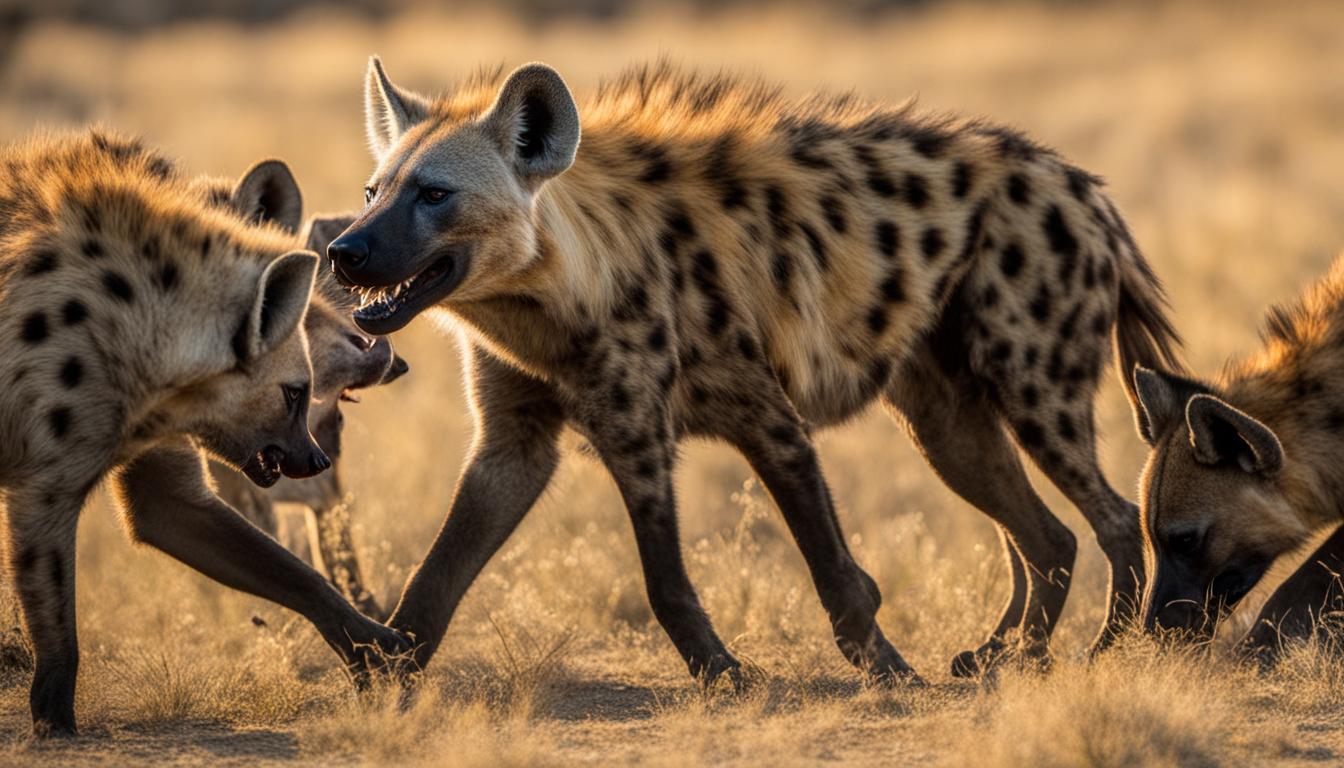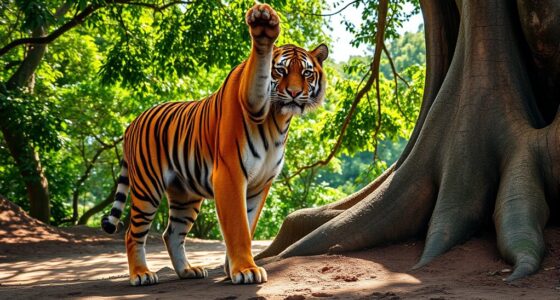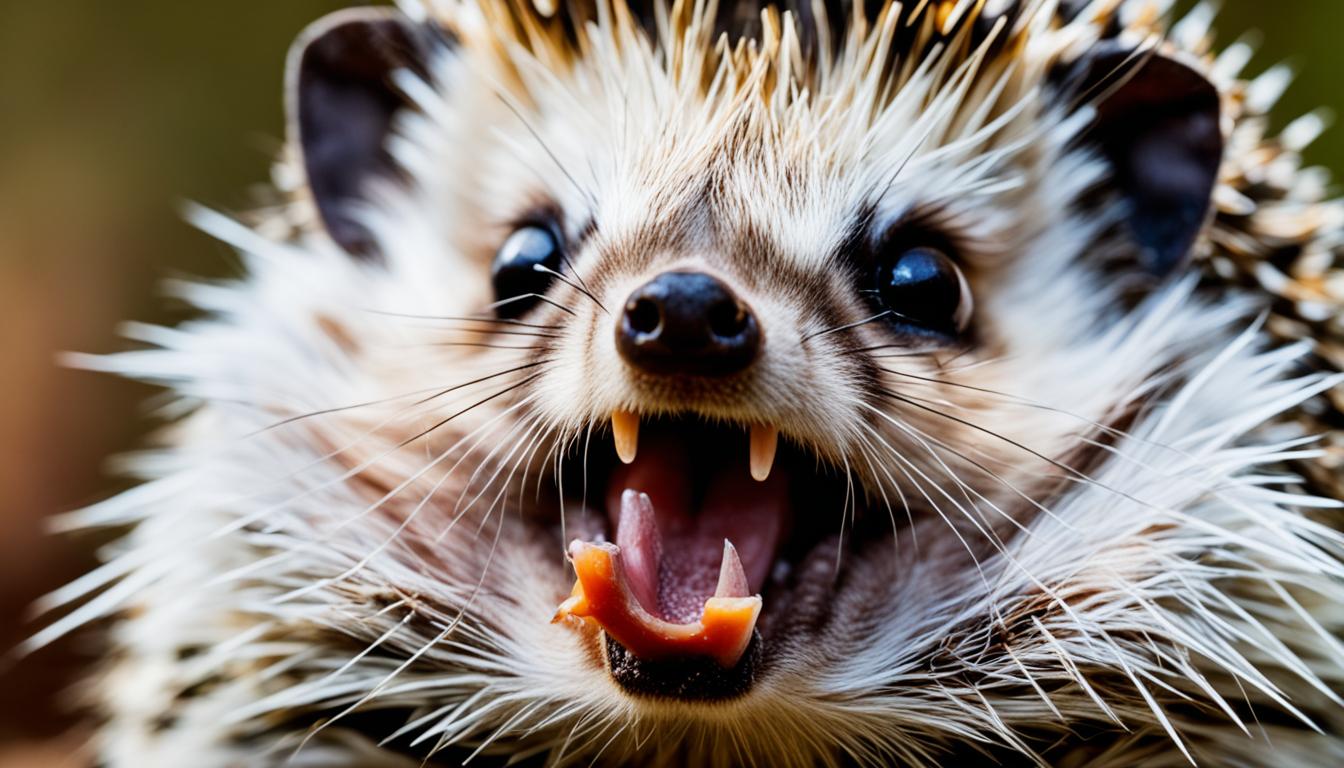Animals often provide clues about weather changes through their behaviors. For instance, cows might lie down before a storm, while frogs croak when rain is on the way. Birds sensing infrasound may fly low, indicating bad weather. These patterns have roots in folklore and scientific observations. However, it's important to note that not all animal signals are reliable. So, exploring more about these fascinating connections can uncover even deeper insights into nature's weather predictors.
Key Takeaways
- Animals, like cows and frogs, exhibit behaviors that can indicate impending weather changes, such as storms or rainfall.
- Birds, particularly the yellow-billed cuckoo, often serve as signals for approaching storm systems through their altered flight patterns.
- Animal sensory abilities, such as acute hearing in elephants and dogs, allow them to detect environmental changes before humans do.
- Climate change is affecting animal behaviors, leading to earlier hibernation, altered migration patterns, and changes in breeding, complicating traditional weather predictions.
- While anecdotal evidence suggests links between animal behavior and weather, scientific investigations are needed to validate these connections and address skepticism.
The Role of Folklore in Weather Predictions

When you look at how folklore intertwines with weather predictions, you'll notice fascinating connections between animal behavior and environmental changes.
Exploring folklore reveals intriguing links between animal behavior and changes in the weather.
Weather folklore often attributes unique abilities to animals, like cows lying down to predict rain or frogs croaking loudly as a sign of impending storms. Proverbs, such as "Red sky at night, sailors delight," reflect these historical insights.
The woolly bear caterpillar's coloration is another example, despite its appearance being influenced more by age than actual winter severity.
Birds, especially the yellow-billed cuckoo, have also earned their place in folklore as reliable signals for storm systems.
While these tales can be enchanting, they sometimes oversimplify the complex ecological responses that truly dictate weather patterns.
Animal Behaviors Linked to Weather Changes
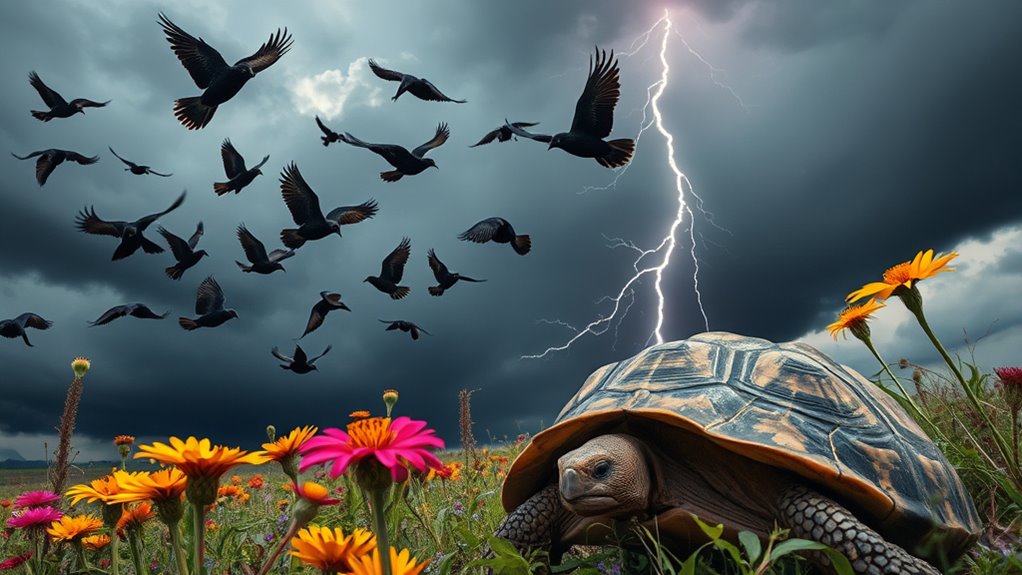
Have you ever noticed cows lying down or frogs croaking more before it rains?
These behaviors aren't just quirks; they can signal changes in the weather.
Animal Signals for Rain
As the weather shifts, you might notice certain animals displaying behaviors that hint at impending rain. For instance, frogs often emit unique "rain calls" before rainfall, signaling increased humidity. These vocalizations serve as cues for you to prepare for rain.
Similarly, if you see cows lying down in pastures, it may indicate an approaching storm, as they can detect moisture changes. Birds flying low also suggest bad weather, sensing infrasound created by storms before they're visible.
Male frogs croak more energetically, correlating with successful mating after rain. Finally, cicadas buzzing might signal impending monsoons, acting as natural weather predictions, often predicting rain patterns about 15 days in advance.
Keep an eye on these signals for your own weather forecasts!
Seasonal Behavior Indicators
Animal behaviors don't just signal rain; they also provide insights into seasonal changes. These seasonal behavior indicators help you understand how animals predict the weather.
For instance, when you notice cows lying down in pastures, it might mean a storm is coming. Similarly, frogs croaking energetically can indicate rainfall, particularly during mating season.
Here are some key examples of animal behaviors linked to weather predictors:
- Woolly bear caterpillars' color patterns suggest their age and feeding duration.
- Increased cricket chirping correlates with rising temperatures.
- Sheep huddling or turning into the wind hints at impending rain or snow.
- Timing of bird migrations signals changing seasons and environmental conditions.
Pay attention to these signs; they can be surprisingly accurate!
Insects as Natural Weather Indicators
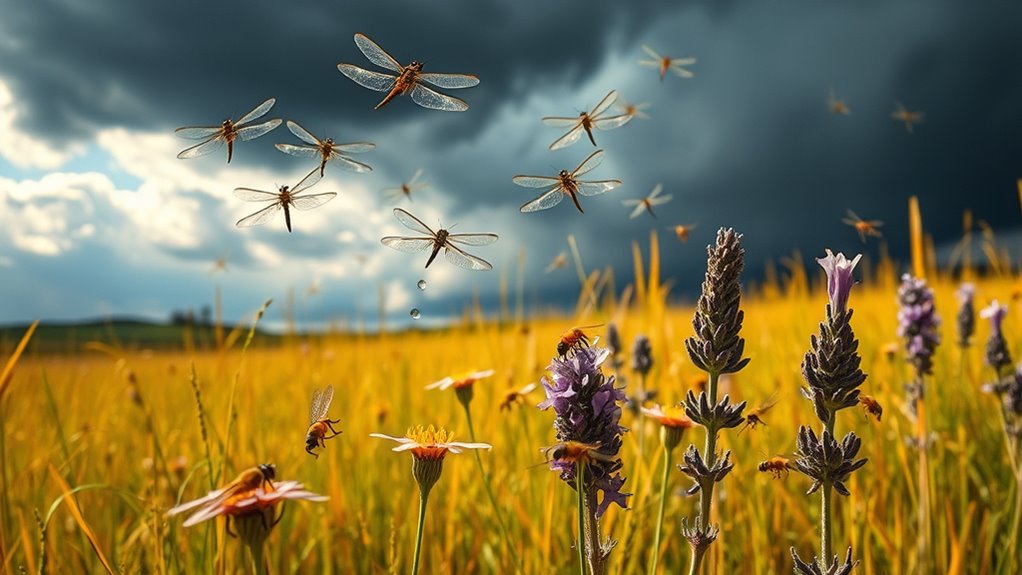
While most people rely on weather forecasts, you might be surprised to learn that insects can also serve as natural weather indicators.
For instance, crickets chirp at different rates depending on temperature, allowing you to estimate the temperature using Dolbear's Law. Similarly, frogs produce rain calls before rain, reacting to increased humidity.
When cicadas start buzzing, it often signals the monsoon season, with rain patterns expected about 15 days later. You might notice ladybugs seeking shelter as a sign that winter is approaching.
By observing these insects, you can gain valuable insights into weather changes, helping you anticipate upcoming conditions without relying solely on traditional forecasts. Additionally, many insects are sensitive to environmental changes, which further enhances their role as indicators of impending weather shifts.
Nature truly offers its own weather predictions!
The Science Behind Animal Sensory Abilities
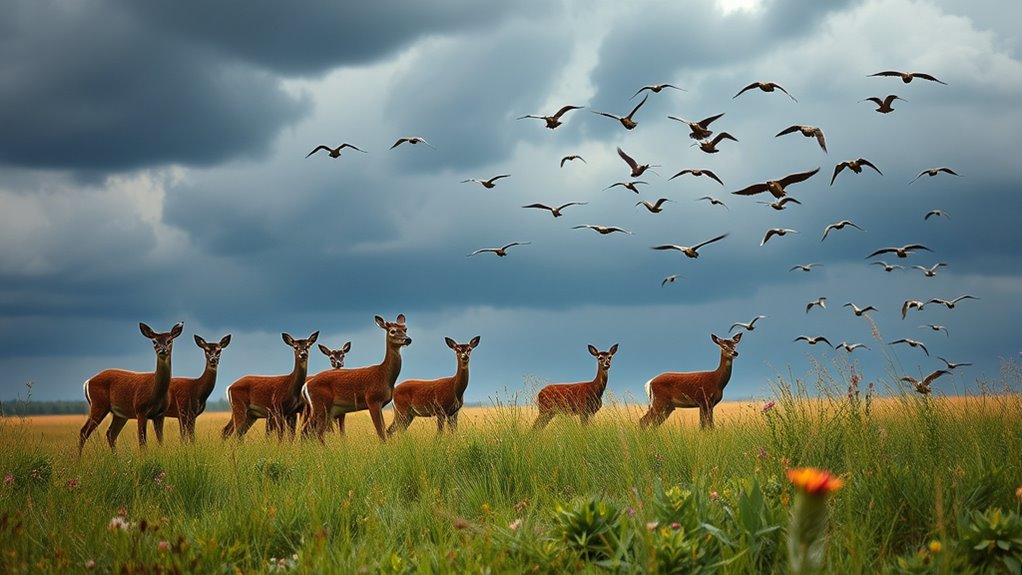
You might be surprised to learn how animals use their remarkable hearing capabilities to sense changes in the environment.
Many species can pick up vibrations and infrasound that humans can't even detect, allowing them to react to impending weather events.
This unique sensitivity isn't only fascinating but also essential for their survival.
Animal Hearing Capabilities
The remarkable hearing capabilities of various species showcase nature's ingenuity in sensory adaptation. Animals like elephants can detect infrasonic sounds below 20 hertz, including seismic waves from earthquakes.
Cattle hear frequencies up to 40,000 Hz, allowing them to perceive environmental changes related to severe weather. Many pets, like dogs and cats, instinctively react to impending storms based on their acute hearing.
Birds can even detect infrasound from distant weather events, giving them a heads-up before storms become visible.
- Elephants sense seismic activity.
- Cattle hear higher frequencies than humans.
- Dogs and cats react to weather changes.
- Certain birds detect distant infrasound.
These animal hearing capabilities play a vital role in wildlife survival and weather prediction.
Sensitivity to Vibrations
Understanding how animals sense vibrations reveals fascinating insights into their survival strategies and environmental awareness. Many creatures, like elephants and cattle, possess a remarkable sensitivity to vibrations, allowing them to detect weather changes and impending disasters.
They can feel vibrations through their feet, triggering instinctive flight responses to severe weather. For instance, studies show that certain birds anticipate weather changes by sensing alterations in barometric pressure, adjusting their migration patterns accordingly.
Additionally, animals such as sharks and birds display notable behavioral changes before significant weather disturbances, indicating their acute awareness of environmental shifts. This heightened sensitivity to vibrations not only aids in their survival but also serves as a natural warning system for impending severe weather events.
Infrasound Detection Skills
While many humans remain unaware of the subtle sounds around them, numerous animals possess an extraordinary ability to detect infrasound—sound waves below 20 hertz that elude human ears. This remarkable skill allows them to sense upcoming weather and environmental changes long before we do.
- Elephants communicate using infrasound over vast distances.
- Cattle can pick up sounds up to 40,000 Hz, alerting them to vibrations indicating weather shifts.
- Certain birds, like golden-winged warblers, respond to infrasound from approaching storms, leaving their breeding grounds in time.
- This ability potentially aids in their survival, influencing behavioral patterns in response to natural disasters.
Understanding these infrasound detection skills sheds light on how animals navigate their environments more effectively than we can.
The Impact of Climate Change on Animal Behavior
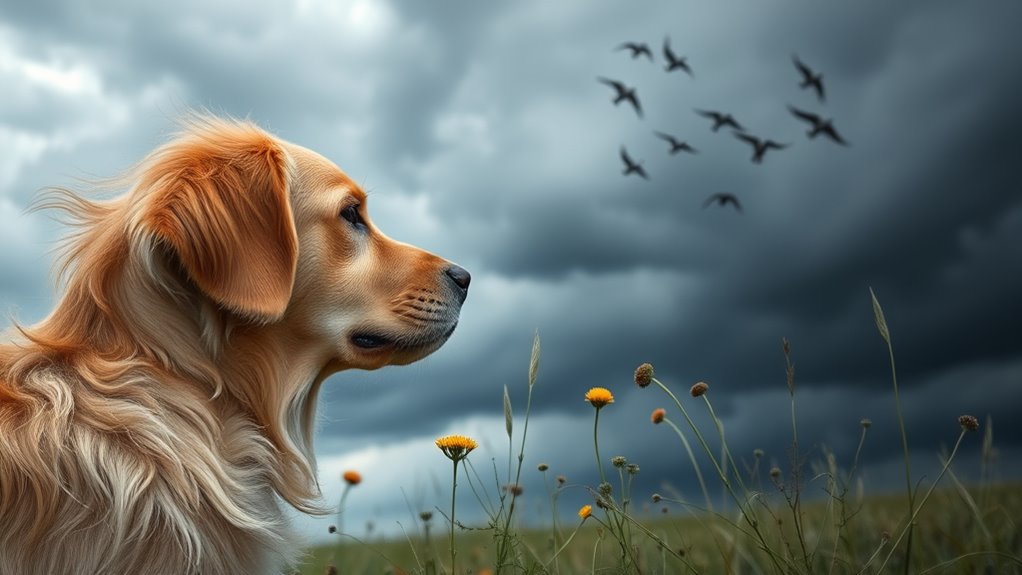
As climate change reshapes our environment, animals are responding in ways that can disrupt traditional patterns of behavior.
Bears are emerging from hibernation earlier, leading to more encounters with humans in search of food.
Birds, affected by changes in temperature and weather patterns, are experiencing altered migration and breeding behaviors, making it harder for them to predict storms accurately.
The decline of amphibians, especially frogs, signals broader ecological issues linked to climate change, further complicating natural weather prediction.
Additionally, warmer temperatures prompt some animals to adjust their seasonal patterns, like earlier coat growth, which mightn't align with traditional weather cues.
Observations of Animal Behavior Before Storms
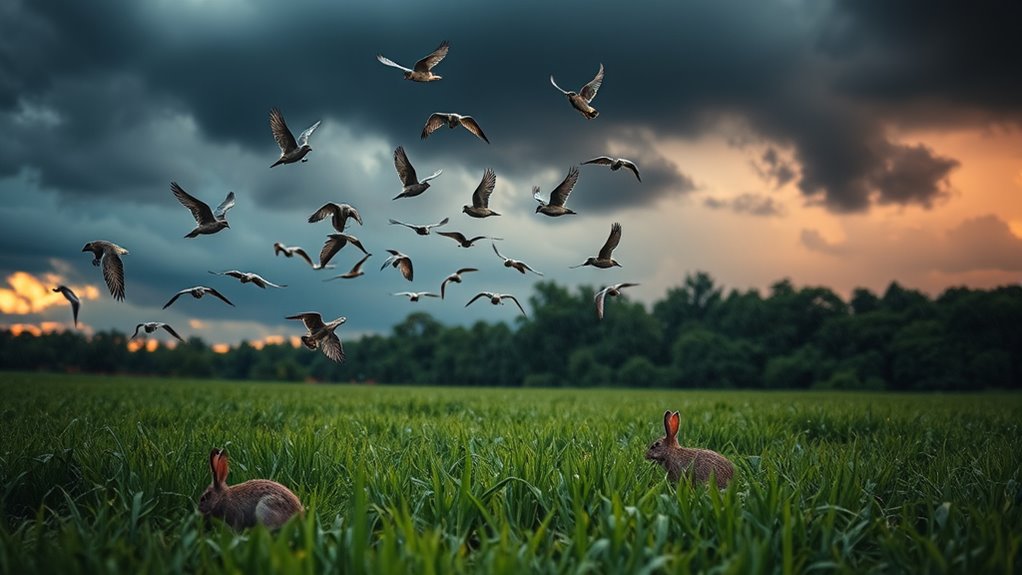
Before storms, many animals exhibit fascinating behaviors that hint at their ability to sense impending weather changes.
These behavioral changes often occur in response to fluctuations in barometric pressure, showcasing their sensitivity to the environment.
Here are some notable examples:
- Sharks swim to deeper waters as barometric pressure drops.
- Birds and bees seek shelter in nests or hives when air pressure falls.
- Golden-winged warblers leave breeding grounds shortly before storms, likely detecting infrasound from approaching weather fronts.
- Elephants and dogs may show unusual behaviors, potentially helping humans prepare for severe weather.
Limitations of Animal Behavior as Predictive Tools
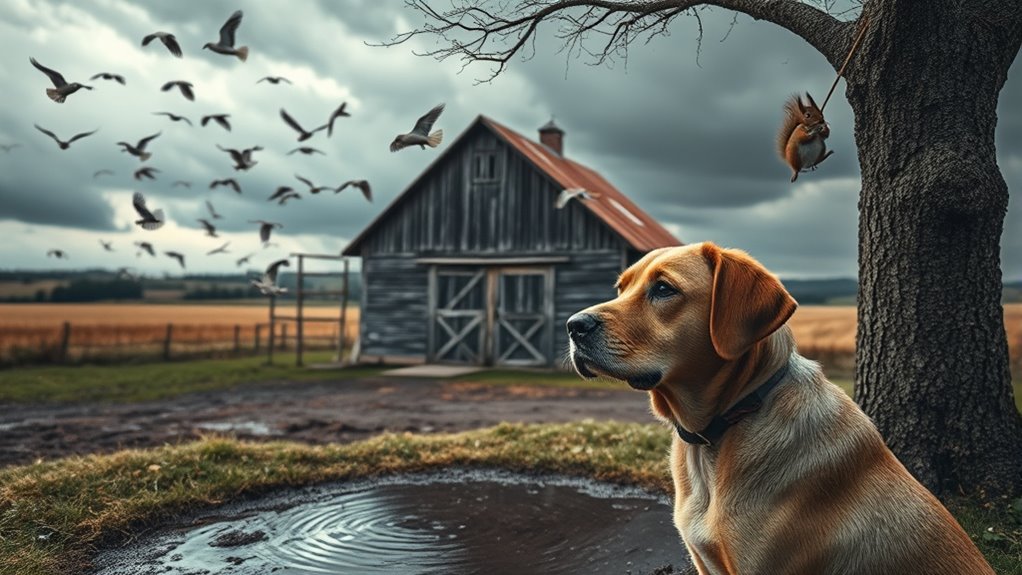
Although animal behavior can seem like a reliable indicator of impending weather changes, its limitations often undermine its effectiveness as a predictive tool. Changes in animal behavior can be influenced by numerous factors, making it challenging to reliably correlate specific behaviors with weather events.
Many traditional beliefs around animal behavior as weather predictors, like the color patterns of woolly bear caterpillars, lack scientific backing and stem from anecdotal observations. This absence of systematic research creates skepticism about their predictive accuracy.
While animals may alter their behavior before storms, these responses aren't always consistent. Understanding animal responses to environmental changes requires further scientific investigation to clarify how effectively these behaviors can serve as indicators of weather patterns.
Case Studies of Specific Animal Weather Predictions
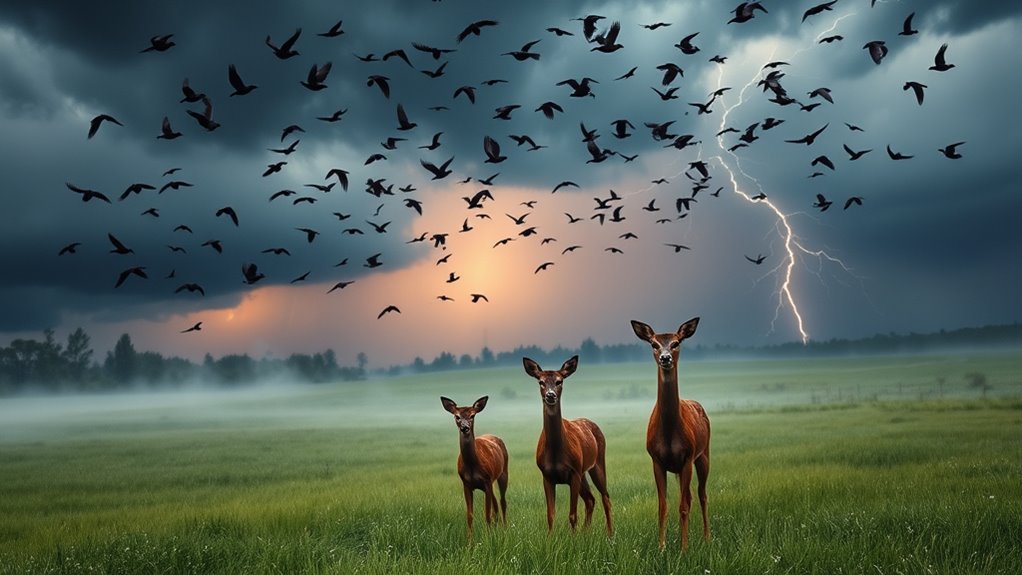
While many dismiss animal behavior as mere folklore, several compelling case studies highlight its potential role in weather prediction. You might be surprised to learn how these wild animals exhibit behaviors linked to impending weather changes.
- Groundhog Day celebrates Punxsutawney Phil, but his predictions often miss the mark.
- Golden-winged warblers evacuate breeding grounds two days before storms, likely using infrasound.
- Male frogs ramp up their rain calls with rising humidity, indicating rain is near.
- Cows lying down in pastures may reflect their sensitivity to moisture, hinting at upcoming rain or snow.
These examples illustrate how animal behavior, steeped in natural history, can serve as an intriguing guide to understanding weather patterns.
Evolving Perspectives on Animal Weather Forecasting

As we explore the evolving perspectives on animal weather forecasting, it's essential to recognize that traditional beliefs are being challenged by scientific inquiry. While folklore suggests that certain animal behaviors, like cows lying down, predict weather changes, studies show varying reliability. Research indicates species like golden-winged warblers detect infrasound from storms, showcasing potential links between their predictive behaviors and climate change.
| Animal Behavior | Traditional Belief | Scientific Insight |
|---|---|---|
| Cows lying down | Rain is coming | Lacks consistent scientific proof |
| Bears emerging early | Warmer winters | Reflects climate change impacts |
| Cicadas buzzing | Monsoons approaching | Requires further validation |
Frequently Asked Questions
How Are Animals Used to Predict Weather?
You might notice that animals exhibit certain behaviors before a change in weather. For instance, cows and sheep may lie down or huddle closely when rain is on the way.
Crickets adjust their chirping rates based on temperature, while frogs create unique calls before rainfall.
Birds can even sense storms and alter their migration patterns. By observing these behaviors, you can gain insights into upcoming weather changes, relying on nature's signals.
How Do Animals Know When Bad Weather Is Coming?
You might think animals possess a magical sixth sense, but they actually rely on finely tuned instincts.
They sense changes in barometric pressure and vibrations in the environment, alerting them to incoming storms. For instance, birds flee breeding grounds while cows lie down restlessly.
Frogs croak louder as humidity rises, signaling rain. These behaviors showcase their remarkable ability to detect subtle environmental shifts, keeping them one step ahead of nature's fury.
What Animal Predicts the Weather?
When it comes to weather prediction, several animals stand out. Groundhogs, like Punxsutawney Phil, are famous for their forecasts on Groundhog Day, even if they're often wrong.
Frogs croak more as humidity rises, hinting at rain. Crickets chirp in tune with temperature changes, while cows exhibit behaviors like lying down before storms.
Birds, especially during migrations, sense atmospheric shifts and adjust their flight patterns. Each of these animals offers a unique glimpse into nature's weather signals.
Can Animals Predict the Weather Statistics?
Like nature's own weathervane, animals may offer hints about upcoming weather, but the statistics don't fully support their predictions.
While some behaviors seem to align with weather changes, scientific backing is often thin.
For instance, you might notice frogs croaking or cows lying down, but those actions might stem from instinct rather than reliable forecasting.
Conclusion
In the grand tapestry of nature, animals are your whimsical weather wizards, predicting storms and sunshine with uncanny precision. From the way a cat twitches its tail to the chorus of crickets serenading the twilight, these creatures hold secrets that could rival the best meteorologists. While they might not replace Doppler radar, their behaviors offer a glimpse into the wild world of weather forecasting. So next time you see a squirrel scurrying, pay attention; it might just be your furry forecaster!

